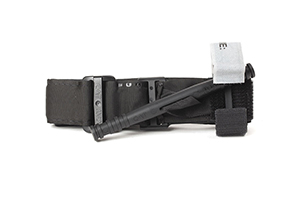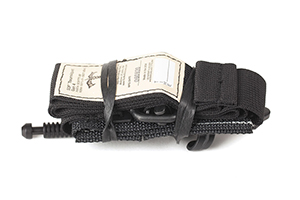Jul 22nd 2021
Tourniquet Myths and Misconceptions
The Truth about Tourniquets
Always Better. | July 22nd, 2021
1. Tourniquets are a Last Resort
False
It is true that this was once taught, I was told this in my first Medic class, but we have learned a lot since then. Tourniquet use as a last resort is an antiquated protocol for trauma. Tourniquets have been proven to be safe and effective devices, which is why the FDA classifies them as Class 1 medical devices (Low Risk). If someone ever repeats this myth to you, go ahead and tell them they are wrong. It isn’t up for debate, science and actual field uses have proven it as fact.. If you find yourself in a situation where you or someone else is bleeding significantly from an arm or leg, apply a tourniquet as high and tight on the limb as possible as a FIRST step.
2. Tourniquets should be Loosened Periodically
False
You just stopped the bleeding, why would you start it again? This is another antiquated protocol for bleeding control. Unfortunately, many civilian medical personnel still think this is correct. It’s not. Once a tourniquet is applied to a limb it should only be repositioned or removed by a medical professional. Generally, a tourniquet is removed at the time of surgery. This myth is related to the next one.
3. You Will Lose The Limb if a Tourniquet is Left on for ___.
False
The very same people repeating the above myths will announce that any tourniquet left on for more than (insert a time period here) guarantees loss of the limb. Which is why they used to tell people to loosen the tourniquet periodically to supply “fresh blood” to the limb. Nope. In fact, multiple medical studies have shown no effect to leaving a tourniquet in place for hours. Yes, eventually the tissues of the limb will begin to die. And Yes, at some point that could result in limb amputation. But what is the option? Remove the tourniquet, save the limb and let the patient bleed to death? I will go without the limb given those options.
Tourniquet Damage Continuum
Possible Limb Loss After 3.5 Hours
0-120 Minutes Start of Treatment
Increasing Pain
120 to 210 Minutes 2 hours
Nerve & Muscle Compression Injury (Temporary)
210 to 300 Minutes 3.5 hours
Widespread Muscle & Nerve Damage (Temporary)
300 Minutes 5 hours
Severe Effects Upon Tourniquet Removal (Cardiac, Renal the MD need's a full ICU/OR Staff to assist)
4. Improvised Tourniquets Work Great
False
Everyday items don’t make great tourniquets. Can you use something to improvise a tourniquet as a last resort? Yes, but you should only do so in a life-threatening situation when a commercial pre-hospital tourniquet is not available. Belts, neckties, zip-ties, boot laces, etc. don’t make great tourniquets because they are not legitimate medical devices. Generally speaking, those improvised techniques result in a thin cord which bites into the limb and can cause permanent tissue and nerve damage. Commercial tourniquets are generally at least 1.5” wide, the wider the better. Commercial tourniquets also go through extensive testing, design controls, FDA approvals and quality control. They also come equipped with some form of mechanical advantage which allows you to get them much tighter than an improvised device. It takes a surprising amount of force to stop an arterial bleed.
Tournequets are found Here

Combat Application Tourniquet (C-A-T)
The patented C-A-T® is a true one-handed tourniquet proven to be 100% effective by the U.S. Army’s Institute of Surgical Research. Tests proved that the C-A-T® completely occluded blood flow of an extremity in the event of a traumatic wound with significant hemorrhage.

Special Operations Tactical Tourniquet Wide (SOFT-T)
Pronounced Soft T Wide, the Special Operations Tactical Tourniquet Wide is a CoTCCC approved tourniquet preferred by many users due to its strong construction, metal windlass and ability to fold flatter and smaller than the CAT.

SWAT-T Tourniquet
The SWAT T is being utilized in BFG med kits as a PRESSURE DEVICE and not as a primary tourniquet. While it can be utilized as a tourniquet, we recommend the CAT or SOFTT-W as a primary tourniquet for their ability to be self applied.
Adequate training should be completed from a licensed professional before performing any first aid discussed in this article. This is not medical advice.
